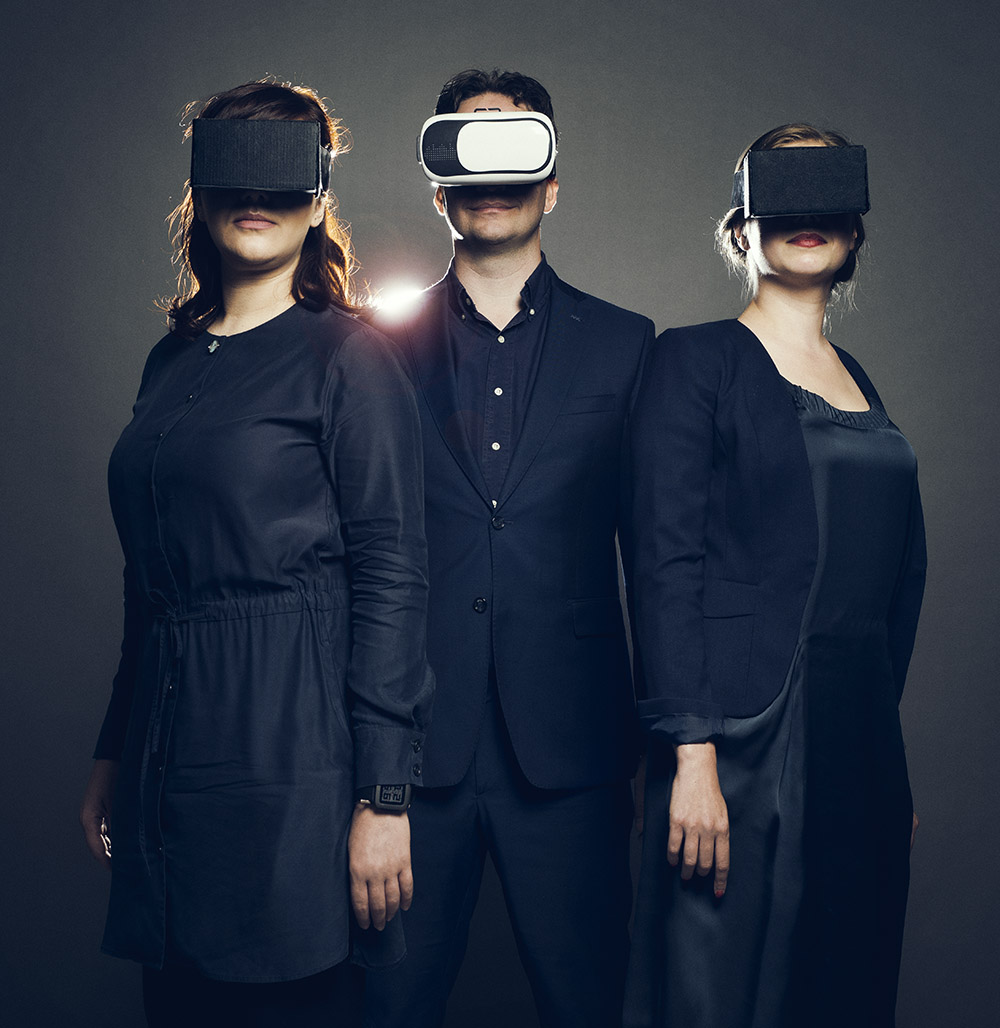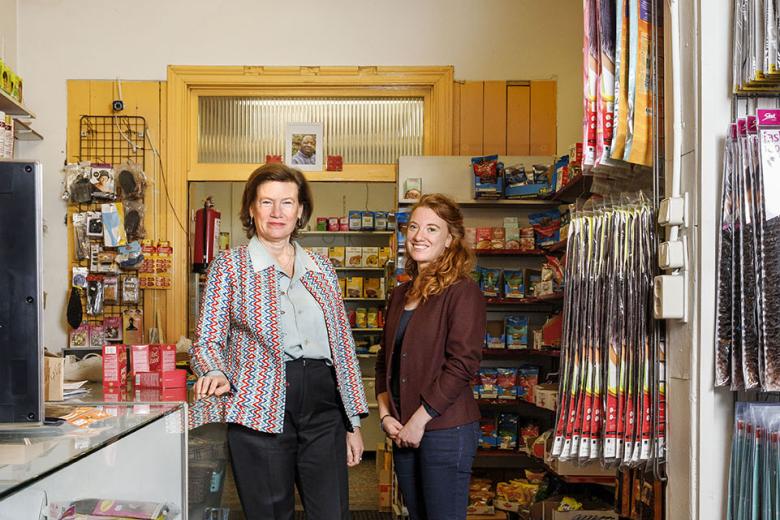More fun in the legal classroom
The work lawyers do, the way they do it – indeed, the entire labour market – is changing radically. This calls for new, ‘soft’ skills, which in turn requires an education revolution. And to this end innovative technology can make an important contribution, according to Bram Akkermans, Catalina Goanta and Gwen Noteborn from Maastricht University’s Faculty of Law. They are integrating simulations, virtual worlds and holograms into their teaching. “Innovative education is in our DNA.”
Technology is taking over the legal classroom. During a lesson on negotiating, students wear a futuristic pair of glasses: Google Glass, a type of wearable technology that provides audiovisual information to the wearer. The students are tasked with resolving a conflict between two parties. If they need help, the tutor can send them a ‘secret message’ via the glasses: “put yourself in their shoes”, for example, or “try to be less aggressive”. This way, students can put the feedback into practice immediately.
Law is not a discipline you immediately associate with an innovative multimedia environment, admits Akkermans, associate professor of European Private Law. “There’s this idea that it’s a bit behind the times, the image of dusty books and so forth.” So he and his colleagues, education researcher Gwen Noteborn and assistant professor of Private Law Catalina Goanta, developed and launched a number of innovative projects. In ‘Implementing Wearables in the Classroom’, wearable technologies are used to incorporate simulation into the lessons. And through The SkillsChannel, the faculty’s own YouTube channel, education and training are delivered by means of vlogs. Akkermans: “Innovative education is in our DNA.”

Tech literate
Society is changing, and so is the legal profession. If you want to draw up a will, just pop into HEMA. For legal questions there are websites like vraaghugo.nl, and if you find yourself involved in a legal dispute, there’s no need to go to court – you can opt for mediation instead. According to the three we are on the eve of a revolution in education, where the focus will be on learning what they call ‘soft skills’ or procedural knowledge: listening, negotiating and mediating. These are the skills of the 21st century, and there is already increasing demand for them on the labour market.
Emerging technologies, Noteborn’s research has shown, offer a toolkit for practising such procedural skills in a real-life context. This approach has a number of advantages. “It allows us to provide individual education even though there is less and less money for ever more students”, Goanta says. But perhaps the biggest benefit lies in making students ‘tech literate’: “Being able to work with new technology is crucial in today’s workplace, and leads to greater employability.”
Fun factor
In her PhD dissertation ‘Education revolution’, Noteborn also shows the importance of the ‘fun factor’ of these new technologies. When students enjoy learning, they do better. “Students get a kick out of the use of technologies like Google Glass. This makes them more engaged, so they work harder, which results in less stress at exam time and better study results. Modern devices are fun; poring over a book puts you to sleep. The more fun students have in class, the better they perform.” Following the success of Google Glass, the lecturers plan to experiment with Microsoft HoloLens, a pair of glasses that lets wearers see holograms. “That way you can make it look like there’s a judge in the classroom.”
Low-threshold technology
The university is, in their view, not fully reaping the benefits of new technologies. Goanta: “It’s a cliché perhaps, because it was already true twenty years ago, but there’s a massive gap between what you learn at university and what’s expected of you in practice.” They began tentatively experimenting with wearables at the law faculty two years ago. “Many people are scared of new technology, but that’s okay. You can take a low-threshold approach, like using Facebook in mediation. What we do isn’t for everyone, but it demonstrates the potential of technology in education.”
Classroom of the future
For future lecturers, new technologies offer abundant opportunities. “Teaching will become more personalised”, Noteborn says. “For example, you can use wearables to measure biomedical data like blood pressure and heartbeat. That way you can see if a student arguing a case is suffering from stress, so you can reassure him, reduce the fear, and see immediately via biomedical feedback whether this is helping. The new technologies also enable lecturers to tap into students’ motivation and specific competences or shortcomings. Take smartwatches: they can tell you when a student needs to make more eye contact with the judge or draw his attention to a certain article of law.” Akkermans: “The classroom of the future will be more virtual. This can contribute to the Maastricht University ‘style’, with close relationships in small groups.” But, he says, the physical classroom will not disappear. “The on-campus experience, meeting in person and doing things together, will always be there.”
By: Hans van Vinkeveen (text) en Hugo Thomassen (photography).
Also read
-
Maastricht University and YERUN - A recap and a glimpse into 2024
Maastricht University is an active member of the Young European Research Universities Network, championing values of innovation, openess and responsibility.

-
Empowering Smallholder Farmers in the Data Economy: Unlocking Opportunities and Overcoming Obstacles
Frederik Claasen, the head of policy at our partner organisation Solidaridad Network on the opportunities and obstacles facing smallholder farmers in their data ecosystems.

-
How do involuntarily returned migrants fare in Senegal?
The PhD research of Karlien Strijbosch focuses on Senegalese migrants who were forced to return home after a stay in Europe. Doing justice to such stories is no easy feat, especially when you come up against walls of silence, distrust and shame. Strijbosch and her supervisor Valentina Mazzucato...
